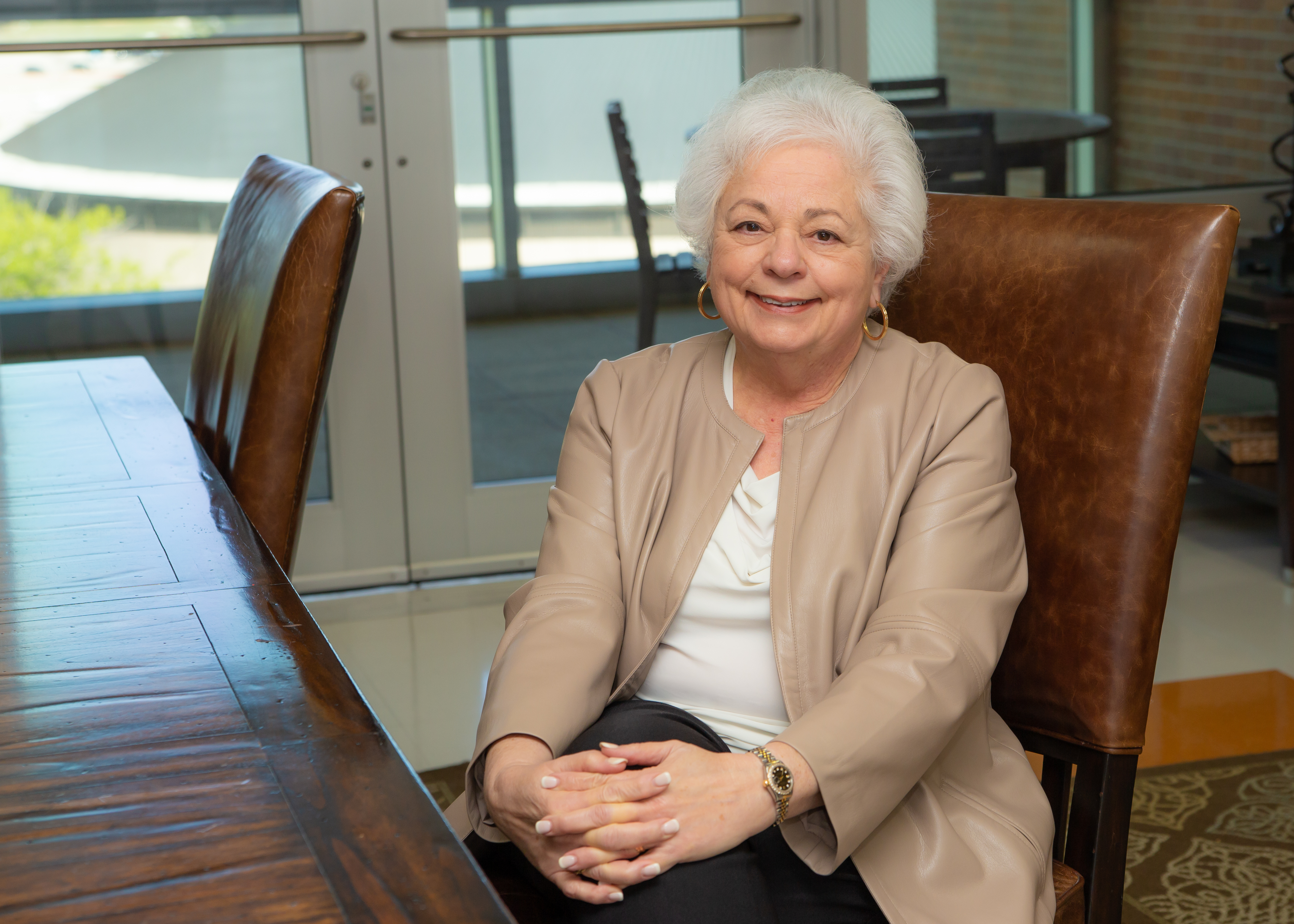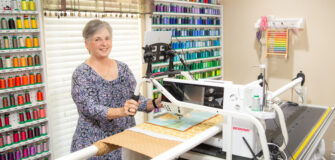
Kathryn Casey is primarily known as a true-crime writer, but her writings cover the spectrum. She’s written about glitzy art galas in Houston, interviewed A-list celebrities, interrogated serial killers, dished with first ladies over tea, and authored several novels. She has written more than 100 magazine articles, 11 works of non-fiction, and 7 novels. She has been seen on numerous news programs and documentaries and can currently be seen in all three episodes of Netflix’s Crime Scene: The Texas Killing Fields, which ranked as one of the most streamed programs in December 2022.
The Midwest, in Wauwatosa, Wisconsin, which is near Milwaukee. I still have family there, and we go back from time to time.
I moved to Texas in 1980, when my husband moved here for a job. At the time, I was working a flexible job as a bookkeeper. When I got to Houston, though, I decided to make a switch and earn a bachelor’s degree from the University of Houston.
I did. I wanted to major in English, but I was in my thirties, and I thought that was really old. I figured I needed to be practical and get a degree in journalism.
I do not.
Yes. I obtained an internship with Houston City Magazine, which, in turn, led me to being hired by the magazine. By the time I left a couple of years later, I was a senior editor. I then jumped to Ultra.
It was a bit like a Town & Country for Texas. I went to many ritzy parties and store openings, and we published a lot of stories with ball gowns and jewels. I was there for about two years, and then I worked regularly as a contract writer at Ladies Home Journal for almost two decades. During this period, I did a lot of freelance writing.
I wrote for numerous magazines and newspapers. I published for The Washington Post, Houston Chronicle, and The Boston Globe. I was a stringer for Newsweek and People. I wrote for Rolling Stone, Town & Country, and Seventeen. Freelancing was great because it allowed me to do different things, but it was important to have regular work, as I did with Ladies Home Journal.
It was a lot of fun. One week I might be in a penthouse at Caesar’s Palace interviewing Reba McEntire; then I would go to talk to a grandmother in another state who had been artificially inseminated with her grandchildren; this could be followed by a visit to Allentown, Pennsylvania to cover a serial-killer case; and then it was off to the White House to interview Hillary Clinton.
That’s correct, I’ve interviewed Betty Ford, Rosalynn Carter, Barbara Bush, Hillary Clinton, and Laura Bush.
That is a tough one. But I really liked Laura Bush. I spent two days with Ms. Bush, one day with her during the campaign and a day interviewing her. She had been a librarian, and we spent a lot of time talking books, which I enjoyed very much.
When interviewing Rosalynn Carter, I had something of a surprise. While in her home in Plains, Georgia, President Carter walked through the door. He had been clearing out some vegetation, and he had cut his hand. He walked in the door, saw Rosalynn and me speaking, and he interrupted, asking, “Rosalynn, do you think we have health insurance?”
No, he was just playing, but he sat with us for a while during the interview. At one point he interrupted again, and noting that I worked for Ladies Home Journal, he said, “Lot of recipes in that magazine. Think you could make us some lunch? I’m getting darn hungry.” At that point, Rosalynn got up and escorted him out of the room.
Absolutely. The internet was emerging, and people were writing internet content for free. A lot of the print media began to dry up, and jobs became scarce. Fortunately, I was writing books by then. Not all writers were that fortunate.
Just as one example, when I did a piece for Rolling Stone, I had to supply the editors with a list of all my sources and their contact information. The magazine had fact-checkers, and all my work had to go through a legal team. Back then, even as a freelance writer, I had support from the magazines. The leading magazines had research teams to support writers. There were strict journalistic standards.
I began covering true crime while I was with Houston City in the 1980s. There was a love-triangle murder I covered, and I spent months working on it. I found the trial addictive; I enjoyed seeing the attorneys in action. It was like a chess game; as a journalist, I was watching the strategy. I enjoyed that aspect of it. But the cases are also sad, and it is difficult to interview the victims’ families. But I thought there was something valuable in getting the information to the public.
Partly. It’s putting the puzzle together, assembling the pieces into a coherent picture, making sense out of the case. Prosecutors have asked me, “How did you get all that information?” For me, it’s a quest.
The Celeste Beard case in Austin probably involved the most unusual set of circumstances. It was something of a preposterous story, one I described in She Wanted it All. If the Coen Brothers made a movie about domestic murder, it might look like the Celeste Beard case.
Celeste married a millionaire widower, Steve Beard, who was more than twice her age. She had also befriended Tracey Tarlton, the manager of Austin’s Book People, and the two of them, according to She Wanted it All, made two unsuccessful attempts on Steve’s life. In a third attempt, Tracey shot Steve in the stomach, and he died four months later from a (probably related) blood clot. Tarlton received a reduced sentence for testifying against Celeste, and she was released from prison in 2011. Celeste was convicted of capital murder, and she is not eligible for parole until 2042.
I’ve basically been in a long-running legal education, dating back to the 1980s, when I began covering criminal trials. I’ve been in a lot of courtrooms. True-crime is interesting, but it’s not a lot of fun to write, and it’s reporting, not creative writing. I began writing fiction to explore things creatively, to have control of the plots, and I’ve been having fun with it.
Casey’s first novel, Singularity, was published in 2008, and it featured Sara Armstrong, a Texas Ranger. Library Journal called it a “well-written debut” and Booklist called it “impressive,” with a “memorable heroine” who “has brains, moxie, and heart.” Casey wrote four novels featuring Armstrong.
I spent about a month going around interviewing female police officers. They shared with me the process of breaking into the profession and various elements of law enforcement. And, of course, I have my own experiences covering cases, so I have a lot to draw on. What I learn in non-fiction bleeds into my fiction.
They both sell pretty well. The fiction works have been pretty successful, but I am known as a true-crime author.
Ann Rule referred to Casey as “one of the best in the business” and author Gregg Olsen called her a “true crime great.”
I have submitted a couple of chapters of a proposed non-fiction work to my agent. I would like to do more. True crime is very popular right now, perhaps a function of both podcasts and documentaries on Netflix and such. I think readers take something from the true crime.
My first three Sara Armstrong books were done through St. Martin’s, and I had a clause in that contract that I could get the rights back under specific conditions. It worked out, and I was able to get those rights. When I wrote my fourth Armstrong book, I self-published it.
Not as much now. Self-publishing is quite common, and if I don’t like an offer from a publisher, I can go the self-publishing route.
It depends on various factors, such as who the author is, but the standard on a paperback is for the author to get eight percent; and for an e-book, the author receives twenty-five percent. With self-publishing, the author will receive between thirty and seventy percent of the cover price, but the author will also need to hire the copy editor and cover designer. And, of course, the author will need to do all the promotion.
In my magazine years, I spent a week in a polygamous Mormon town about an adoption case. It is a lifestyle that’s very different from what most people know, and, as I was writing my novel, I thought that knowledge might be useful in forming the backstory and setting.
Female sleuths sell well; they are in demand. But, also, I am female, and I have done a lot of investigating. I know female police officers. I can take what I know, and I can incorporate it into my novels.
I have never done that, but it is a great idea. If I do that, I’ll have to include you in the acknowledgements!
You can see Kathryn Casey on Netflix’s Crime Scene: The Texas Killing Fields, you can find her books on Amazon or at almost any bookstore, and you can learn more about her on her website: https://www.kathryncasey.com/index.htm.

Postcards Magazine
936-293-1188
PO Box 690
Huntsville, TX 77342
